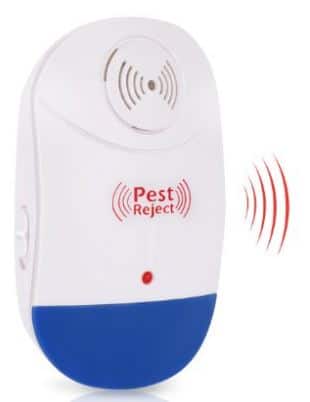Table of Contents
Mice seem to congregate in your home at the least opportune times. If you aren’t meticulous about cleaning and watching for rodent incursions, you can easily find your home overrun by mice and their nests before you can get a handle on dealing with them. When you’re trying to get rid of mice in your home, it can be frustrating because they often don’t show themselves.
Worse, it seems like no matter what you try, more of them show up. Multiple methods of getting rid of mice exist, but not all of them are as effective as they could be. For example, ultrasonic pest repellers are commonly marketed as being effective against mice, but they have been shown to lack long-term effect. You have to take other measures to keep mice out of your home.

Mouse Mousetrap Case taken by 3dman_eu. Licensed under CC0 Creative Commons
How Are Ultrasonic Repellers Supposed To Work?
The theory behind ultrasonic pest repellers seems to make sense at first. The repeller plugs into an outlet and emits ultrasonic frequencies that are supposed to make the mice or other rodents uncomfortable. After a day or so, they lose their effect because mice can easily get used to the sounds given off by the ultrasonic frequency emitter.
Other Drawbacks
The other disadvantages to this product type have to do with physics. The higher a wave frequency is, the more easily it can be disrupted by objects, and the reverse is also true. It’s why we can receive radio waves over such long distances.
Conversely, ultrasonic waves above the range of human hearing get quickly blocked and disrupted by a variety of objects. If you have furniture in a room, the furniture will block the sound waves. Even something as thin as a window curtain can block ultrasonic frequencies so they don’t travel very far. Even the air acts as an insulator.
Another problem is that they have to be plugged into an outlet. They can then only work in a limited radius. Mice will quickly learn to avoid places where the sounds are coming from, making it an ineffective deterrent.
Here is an article that talks about some of the side effects and dangers of ultrasonic repellers.
False Advertising And Lawsuits
In 2001 the Federal Trade Commission sent warning letters to manufacturers of these devices that they had to back up claims of effectiveness with scientific data.
One manufacturer, Bell and Howell, was sued under class action status about the ineffectiveness of their ultrasonic devices in 2018.
A second manufacturer, Woodstream (owner of the Victor brand), was sued in 2019 under the claim that its devices are worthless.
So How Do You Keep Mice Out?
Even though ultrasonic repellers don’t work that well, you can still get rid of your mouse problem by using mouse traps. We’ve found a few that work quite well, depending on how heavily the house is infested.
For example, you might try the Mice Cube. It’s a simple and effective design that works by having a one-way hinge door leading into the chamber. It allows you to catch and release the mouse humanely outdoors, if you prefer not to kill them. These are the type of traps I recommend for people dealing with mice in their bedrooms. If you want something lethal, go for a traditional snap trap. Just make sure to keep your hands and fingers away from the strike pad.
When you set a mouse trap, it needs to be in an area where a mouse is likely to travel. Along the wall, in dark corners, underneath cabinets or your stove, or under other furniture are good spots. Mice like warm, dark places to build their nests and breed. Placing traps out in the open isn’t going to do any good.
When you decide to use mouse traps, you need to use multiple ones, especially if you have a lot of mice coming into your home. Place the traps about six feet apart with the bait side facing the wall. This makes it less likely that a mouse will take the bait.
Calling an Exterminator
If your mouse problem is too severe to handle yourself, you may need to call an exterminator. Ideally, an initial inspection or assessment should cost you less than $100. Ideally, they need to be certified wildlife removal specialists, but this option may not always be available. You also should look for an exterminator who will rid your home of mice permanently with only one or two visits; professionals that try to get you to sign a service contract should be avoided.
Conclusion
Despite what marketing claims may say, you should avoid ultrasonic pest repellents for mouse removal. They only work for a few days, and even then, their effectiveness is limited because they need to be plugged into a power outlet, and the sounds can be easily blocked.





